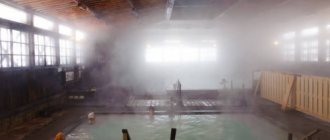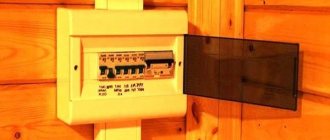A gas sauna stove is a convenient and economical heating option. For Russian users, this method is somewhat unusual, since it does not apply to traditional options for arranging a bathhouse.
However, the use of gas furnaces allows for quick and economical heating, the ability to use different types of fuel (natural or liquefied gas), and the absence of the danger of carbon monoxide poisoning. At the same time, gas furnaces have their own specifics, which do not allow frivolous or inattentive attitude. The issue is serious and requires careful consideration.
4.5/5 — (2 votes)
Gas stove for a sauna or bath?
Time does not stand still: more and more lovers of steam baths understand not only the significant difference between the national baths of neighboring peoples, but also that the conditions of these baths are demanding in terms of heating equipment, room design and other components.
Hence the question: in which bathhouse would a gas stove be appropriate? And is it really contraindicated for someone else?
The answer to this is quite simple: gas is just fuel , and the material from which this stove is made will be of real importance for your bathhouse.
After all, it won’t be a big discovery for you that a gas burner can be placed not only in a metal oven, but also in a brick oven?
And a brick stove is the most optimal unit for a real Russian bath .
But not every brick stove is suitable for gas. What are the restrictions?
- The combustion part should not be too large, but the torch from the burner should not touch the stove material .
- A stove without a smoke circulation system is not suitable. A Dutch or Swedish design is suitable .
- Bell-type stoves are also not an option for switching to gas, because the gas combustion product will not be retained under the hood, it will be carried out into the chimney, and the hood’s task is to catch the heat. In this case, he won’t have time .
The least suitable for a Russian bath would be a metal stove without shielding . But with a good-quality brick screen, this is also a completely acceptable option.
As for the sauna , it requires fast and strong convection . Consequently, the best stoves will be those that have nothing stopping them from freely heating fresh air flowing through the ventilation from the street - this is either a metal stove without external decoration with an open heater, or the same stove in a mesh casing.
Gas as a fuel behaves quite controllably and predictably, if you do not violate the operating instructions. Therefore, you can get the specified conditions without surprises.
And for a better understanding, let's look at this:
Top 3. Kusaterm 10/20 kW
Rating (2021): 4.48
- Characteristics
Average price: RUB 1,348,072.
- Country: Germany
- Heated volume: up to 20 cubic meters. m.
- Power: 20 kW
- Gas burner: included
- Kamenka: open
- Remote tank: no
A high-quality German stove is designed for small areas, so it is often installed in family baths and saunas. When choosing this gas appliance, you don’t have to worry about safety - the model is equipped with protective railings, and strong Foamglas foam glass reliably insulates the floor from heat. In general, the quality and class are confirmed by the CE marking. This mark is a guarantee of compliance with all EU directives. Reviews praise the model for its technology - the built-in fan has a low noise level, and all control is carried out via a digital panel. The highlight of the device is its universal design, which allows you to decorate it yourself with natural stone and thereby fit the model into any interior.
Advantages and disadvantages
- Low noise level
- CE marking
- Floor protection with foam glass Foamglas
- Small area work
- High price
Gas furnace device
What was said above already seemed to hint that a gas stove is not much different from a wood stove. And indeed: if you wish, you can remake your existing wood stove by installing a gas burner in it.
For your information! There are limitations, for example, it is better to install a micro-torch burner so that the metal does not burn out, you must ensure that the flame does not touch the walls and top.
An internal heater can also become a source of problems - flow-through or closed, it is not designed for a torch temperature of 1600 degrees.
Keep in mind! Even when the gas burns entirely in air, problems remain. After all, all the heat goes up, but the lower part does not heat up . Therefore, the steam room heats up unevenly, which means it takes longer.
By the way, the dimensions of the fuel compartment in an initially gas stove will still be smaller than in a wood stove, but this is understandable - the firewood is voluminous, so additional space in the firebox was allocated for it. But gas doesn’t need that much space. He only needs air.
IMPORTANT! But this is a really important point: for complete combustion, gas needs an influx of fresh, oxygen-saturated air . Because any combustion is oxidation, interaction with oxygen. If there is not enough of it, combustion will be incomplete, and incomplete products are dangerous for humans!
To better understand this issue, let's look at the structure of the main part of a gas sauna stove:
Gas burner device
Today there are two types of burners:
- atmospheric;
- supercharged.
Atmospheric
A cheap type of gas burner because it is designed quite simply. It is a tube or tubes through which one or another natural gas flows under pressure. Before it burns, it must be mixed with air, and the air in this type of burner is supplied only by draft. And if there is no proper ventilation, then it is better not to experiment with such burners.
Well, if you are sure that your ventilation is good, the draft will work properly, then the atmospheric burner will be good - it is silent and does not depend on electricity.
True, it depends on the movement of air in the room itself - this makes changes in the proportions of mixing gas and air. The result is uneven heating. And the efficiency suffers - a lot of heat literally goes into the pipe. In addition, gas combustion is often incomplete.
Supercharged
The second type differs significantly from the first in design. The point of the differences is to make the thrust uniform . This requires a fan, and therefore electricity.
As in an atmospheric burner, in a forced-air burner the gas must first be mixed with air. The fan is adjusted so that the ratio is optimal. When this is achieved, the dependence on air movement in the steam room disappears , and with it the unevenness in the formation of the mixture and its combustion.
It’s worth mentioning right away the advantages and disadvantages of blower or fans (yes, these are also options that are structurally the same thing). It is clear that dependence on electricity is difficult to classify as an advantage.
IMPORTANT! If someone has problems with electricity, then it is better to secure the gas furnace fan with an emergency power source.
The second, less important drawback is noise. The third is the cost, which is 2-3 times higher than the cost of an atmospheric burner. As for the latter, it’s worth calculating how quickly the choice will pay off, because a supercharged burner also has a big advantage: it is twice (!) more economical than an atmospheric one.
In addition, forced-air burners are normally installed in wood-burning stoves. But it’s up to the owner to decide, because converting a wood-burning stove to gas can significantly shorten its service life due to metal burnout.
One more advantage is worth mentioning: the ability to customize power.
operate from both main gas and liquefied gas . At the same time, the transition from one type to another is quite simple.
Video
For a better idea of the subject, watch the video, which clearly demonstrates the operation of a forced-air burner installed in a metal sauna stove.
As you can see, not everything is as simple with a gas stove as sellers say. Therefore, it is worth comparing the advantages of all existing types of stoves.
Top 4. Heat StandardGas
Rating (2021): 4.31
6 reviews taken into account from resources: Reviewer
Better heat transfer The heat generator firebox is made of carbon steel ST 20, which is characterized by increased thermal conductivity. In addition, the design of the chimney eliminates the direct outflow of hot air, thereby increasing the heating of the heater.
- Characteristics
Average price: RUB 29,980.
- Country Russia
- Heated volume: 10 – 24 cubic meters. m.
- Power: 30 kW
- Gas burner: included
- Kamenka: closed
- Water tank: option
presents 3 gas stove models on the market: MalyutkaGas, StandardGas and SuperGas. They are designed for heating baths of various sizes, and the most popular of them is StandardGas with an average power gas burner of 30 kW. In the owner reviews there are no particular complaints about the operation of the unit. The excellent quality of welds, high heat transfer of the firebox, and impressive heating speed are often noted - up to 100° in less than an hour (the room is properly insulated). Conveniently, the water tank (optional) can be installed in various ways - on the stem, on the rear or side wall, on the pipe. There are also some shortcomings - the protective coating peels off quite quickly.
Advantages and disadvantages
- Long service life – 10 years
- Optional equipment with water tanks
- Heat transfer is 2 times higher than that of analogues
- Collapsible design of the gate unit
- Adding water to the tank without disconnecting it
- Small thickness of the firebox metal – 8 mm
- Poor coloring
Comparison of gas, wood and electric ovens
Disadvantages of gas
- Gas furnaces pose not only a fire hazard, but also an explosion hazard. Therefore, this is the only type of stove for which you need to obtain a permit .
- Since a gas stove can be either metal or brick, the issue of the foundation is decided solely depending on the weight of the entire structure, including the chimney.
- If the stove is metal, it will burn out sooner or later - with wood or gas. this will happen faster with .
- According to fire safety requirements, storage for gas cylinders must be a separate building.
- The permit implies not only an inspection of the equipment by a gas inspector, but also a bypass of various authorities .
Advantages of gas
- Easy power control. Despite the fact that the maximum efficiency is maintained even if the power is reduced to 3-5% of the nominal. Wood-burning ones cannot boast of anything like that.
- Precisely set temperature is a plus that electric sauna stoves also have, but wood-burning sauna stoves do not.
- Reducing the preparation time for the bath - after about forty minutes you can already let children and women in, and after another couple of hours the steam room comes into operation (!about steam room stoves here).
- Compared to wood-burning stoves: virtually no soot and soot , no preparatory work with fuel, higher stove efficiency.
- Compared to electric: gas is cheaper than electricity.
Disadvantages of wood-burning
- First of all , the time that needs to be spent getting the bathhouse up to speed is annoying. Depending on the furnace material, this can be either 4 or 6 hours. Metal ones, of course, will warm the steam room much faster, but this is an option for a sauna.
- Another big drawback is the dirt that comes with regular cleaning , from the ash pan to the chimney.
- It is also worth mentioning that the fuel has to be prepared first, because different brands of stoves consume logs of different lengths, so it’s not enough to chop the firewood; sometimes they also need to be cut into the required lengths.
Advantages of wood-burning
- Such a stove in a bathhouse is considered traditional, so the inconveniences associated with it are accepted as a continuation of its advantages. First of all, we are talking about fans of the Russian bath, who value a wood-burning brick or brick-trimmed stove as a source of uniform, soft heat, despite the fact that in a closed heater inside the stove the stones are heated to 400 degrees to produce light steam.
- Those who are more interested in “just washing”, of course, do not see the point in studying the intricacies of the art of the stoker and bathhouse attendant, but they are also able to evaluate a wood-burning stove as the least expensive both in purchasing and in supplying it with fuel.
Disadvantages of electric
- Of course, you don’t need to get permission for an electric one, like for a gas one, but if the stove is not the weakest, you will have to pull three phases to get 380 volts. A good electrician will explain whether 220 V can be used in a particular case or whether there are no options.
- It may be necessary to change the wiring to a thicker cable.
- The cost of electricity is the highest among other types of fuel.
- A rare electric stove is suitable for a Russian bath - it is either an expensive “thermos”, or a Russian invention with a steam generator hidden in an open heater.
- Do not pour too much water and wet the heating elements.
- Heating elements generally fail easily.
Advantages of electric
- An ideal stove for a sauna - everything in it is tailored for this sauna.
- Heats up quickly.
- Takes up little space.
- It does not require either a foundation or a chimney, and therefore at the construction stage you don’t have to think too much about where it will stand.
- If, after this list of advantages and disadvantages, you still decide that gas is more suitable for you than others, let’s look at what you need to focus on when choosing it.
Top 2. Troika No. 06-GT
Rating (2021): 4.57
5 reviews from resources were taken into account: Reviewer
Best value for money The model is quite expensive, but is unique in that it is equipped with a spacious closed-type heater with a wall thickness of 10 to 20 mm. The package also includes gas equipment.
- Characteristics
Average price: RUB 131,120.
- Country Russia
- Heated volume: 40 – 70 cubic meters. m.
- Power: 80 kW
- Gas burner: included
- Kamenka: closed
- Remote tank: yes
The stove is ideal for lovers of a real Russian bath: in dry heat it creates abundant but light steam, and the brick design ensures good heating and long-term retention of the desired temperature. The average heating time from scratch is 160 minutes. Thanks to thermal inertia, the model quickly dries out the room, and the heat of the stones on 5 working sides allows you to quickly reach a high temperature, reaching more than 500°C in the lower layers. Such a device will last a long time, they write in reviews, because the walls of the heater are made of 20 mm low-alloy steel. This thickness is enough to hold up to 280 kg of stones without deformation and guarantee reliable protection against burnout.
Advantages and disadvantages
- Quick kindling
- Spacious heater
- Steel 20 mm thick
- Massive weight of the structure – 390 kg
Gas heater for a sauna: which one to choose?
There are several selection criteria, each of which is worth considering separately.
Power
Powerful gas stove for very large saunas
This is a parameter of heat release per hour of gas combustion. Power varies:
- nominal;
- minimal;
- maximum.
The last two determine the boundaries of stable operation of the burner while maintaining its safety. The rated power determines the maximum heat generation value during long-term operation . This takes into account excess air, which should be minimal, and incomplete combustion of fuel, which should remain within the prescribed limits.
The burner power is indicated in its passport . Our task is to calculate how much energy is needed to heat a particular steam room. Of course, there is a simple calculation for this with coefficients:
- calculate the volume of the room;
- We measure the area of surfaces without thermal insulation - windows, tiles, etc. We multiply their surface area by 1.2 and add the resulting figure to the volume of the room calculated above;
- in a log house without thermal insulation, the increasing coefficient for the entire volume is 1.5;
- if the door to the steam room is glass, add another one and a half cubic meters to the calculated figure.
Let's summarize what we got. The final figure is the number of kilowatts required to heat our premises. All that remains is to compare it with the numbers of the rated power of the burner you like.
By the way, in further calculations you can assume that a gas heater for a sauna with a power of 10 kW will burn 1 cubic meter of natural gas per hour or 0.85 kg of liquefied gas.
Burner type
Above we have already talked about what types of burners there are. It's time to choose the right one.
Let's start with the fact that cheaper atmospheric ones can only be installed in rooms with a volume of more than 12 cubic meters . This is due to the need to ensure sufficient air flow to the burner. Yes, and people should have something left to breathe).
Attention! The smaller the volume of the steam room, the more correct it is to use forced-air burner. In addition, it is more suitable for various types of existing stoves (if you convert wood to gas).
And if you intend to use wood from time to time, and not just gas, then atmospheric is not an option for you .
IMPORTANT! Since we often have low pressure in our networks , we should take into account that Western burners may simply not work at such pressure, which cannot be said about domestic ones, whose manufacturers are aware of the situation with pressure in the networks.
By the way, it is also worth mentioning that in addition to purely gas burners, there are also burners of the so-called “combined type”, which implies the ability to work on both gas and diesel fuel . If anyone has gas shortages, this is their option.
And now the most important thing: when choosing a gas burner, you need to look at whether it is specifically intended for sauna stoves or not. And it’s better if it’s still intended. Their difference is that they are longer than regular ones. This is done in order to place them in an extended (external) firebox. And the use of others in the case of a gas sauna stove is not recommended.
IMPORTANT! A gas stove in a bathhouse should be heated exclusively from the dressing room!
Automation
Automation in a gas furnace is designed not only to simplify its management, but also to ensure the safety of people in the room (not to mention the safety of the room itself). Therefore, you should not neglect it.
What kind of automation can be purchased for which burners?
Atmospheric burners are the simplest, but they can also be equipped with oxygen concentration sensors, which can independently turn off the gas supply if it drops too much. This will protect people from the products of incomplete combustion of gas.
Useful video
But this video shows not only how to ignite an atmospheric burner, but also how the device works to shut off the gas when the flame goes out.
Pressurized have more automation: it is responsible for turning off the gas in cases of a decrease in its pressure in the network, a power outage or the flame going out.
Also, all gas furnaces are equipped with thermostats that maintain the set temperature. These devices also belong to the automation we are considering.
Top 2. Vesuvius Skif Forging 18
Rating (2021): 4.34
19 reviews taken into account from resources: Yandex.Market, 1000pechi
Best price The manufacturer offers to gasify a bathhouse with high-quality equipment for only 17 thousand rubles, which is affordable to the general public even taking into account the cost of the project, gas automation and installation.
- Characteristics
Average price: 16,850 rub.
- Country Russia
- Heated volume: 10 – 20 cubic meters. m.
- Power: 18 kW
- Gas burner: option
- Kamenka: open
- Remote tank: no
Gas-wood stoves Vesuvius Skif are praised for their reliability. Thick steel walls and a heavy cast iron door prevent the structure from burning out, thereby ensuring its durability and safety. The entire heating surface is enclosed in a casing, also known as a convector. Thanks to it, the steam room heats up quickly, while infrared radiation is blocked, and the heat in the bath remains soft. A fairly spacious heater (130 kg) ensures a stable temperature. The power is enough to heat the steam room and heat the bathhouse. At the same time, the price is pleasingly affordable, but gas equipment is offered to be purchased separately.
Advantages and disadvantages
- Attractive design
- Robust design
- High power
- Thick steel walls
- Possibility of heating from an adjacent room
- No gas burner included
- No tray for stones
Nuances to consider before installing a gas stove
We have not touched upon the topic of making a gas oven yourself for one simple reason:
IMPORTANT! Homemade gas stoves and gas burners are not certified ; they are prohibited for use by law . In case of violation, you will have to pay fines.
The only thing in your power is to buy a ready-made burner and prepare the stove for gasification. Compliance with the following standards should be checked:
- the firebox must (!) go into the dressing room, and the firebox opening is finished with iron;
- dimensions of the firebox opening: 47-55 cm in height, 35-45 cm in width, and if together with a metal frame, then 61-68 and 51-66 cm, respectively;
- The minimum room volume for installing a gas stove is 8 cubic meters. (Remember, yes, that atmospheric ones are installed with a volume of at least 12 cubic meters);
- the height of the room cannot be less than 2.2 m;
- It is necessary to have a window with an area of 0.6 sq. meter, a gap under the door to the steam room from 4 cm or a ventilation grille;
- the refractory material under the stove must be at least 10 cm wider than the dimensions of the stove on each side;
- combustible walls should not be closer than half a meter to the heating device.
IMPORTANT! All work related to gasification is carried out by professionals .
Top 4. Koster-Potok 18
Rating (2021): 4.11
21 reviews taken into account from resources: Reviewer
The lightest and most compact The wall thickness of the structure is 4 mm, which makes it light weight: only 70 kg. In addition, the oven is small in size - 609 x 354 x 798 mm. These parameters are important for arranging small-sized steam rooms without a foundation.
- Characteristics
Average price: 23,250 rub.
- Country Russia
- Heated volume: 11 – 18 cubic meters. m.
- Power: 18 kW
- Gas burner: option
- Kamenka: closed
- Remote tank: yes
The gas-wood device creates a stable and controllable microclimate in steam rooms. It differs from classic stoves in its high smoke collector and the location of the flame divider in the upper part of the firebox, which ensures stable heat transfer and heating of the stones. The radial fire holes of the burner completely heat the steam-generating surface, which, together with the heater, is at a minimum distance to the flame. Direct contact with fire is possible thanks to durable stainless steel 4 mm thick with 17% chromium and titanium in the composition. Among the disadvantages is the excessive consumption of firewood, because the stove is heated exclusively with an open vent. However, the manufacturer warns about this nuance in the attached instructions.
Advantages and disadvantages
- Powerful heating of stones
- Durable chrome and titanium elements
- High burner efficiency
- High fuel consumption
Documents that need to be completed to operate a gas sauna stove
fire certificate for gas stove
The first document that you must have is a certificate for the purchased equipment: burner or stove . Anything purchased in a store already has such a certificate.
Another important thing is this: the delivery package of the burner may include a hose with a reducer and other parts for connecting to bottled gas, which, if desired, can be purchased separately, but you need to know that if purchased separately, each part will need a certificate. This will complicate the permitting process.
When the equipment is installed but not yet connected, you need to call an inspector for an inspection . He should check everything and, if necessary, point out what needs to be corrected. After receiving the inspection result, a bypass of other authorities begins, the result of which will be obtaining a permit to operate the stove, which is issued by Rostekhnadzor.
The requirements for naturally aspirated models are stricter than for supercharged ones. In addition to fire safety measures and chimney insulation, as well as the presence of a spark arrestor at the end of the pipe, which applies to any type of burner, the draft and ventilation device will be checked.
Heating system
In those areas where there is no possibility of gasifying the site, a cylinder unit with liquefied propane is often used to heat the bathhouse. Vessels filled with liquid fuel are sold at specialized stations.
When purchasing gas tanks, you should remember safety precautions during installation. Under no circumstances should cylinders be installed in a sauna room. They must be located in a ventilated and easily accessible area of the site, where there is also a fire extinguisher and a box filled with sand.
The most famous Russian companies producing gas furnaces
We are not interested in promoting any of the manufacturers, so we simply inform you that the Russian enterprises Teplodar and Termofor have ready-made gas stoves:
"Teplodar"
Stoves “Taman”, “Rus”, “New Rus”, “Laguna”, “Sibir”, “Sahara”, “Sibirsky Utes” have not only wood-burning, but also gas modifications. Some models from these lines are considered separately: Laguna-12 TK, Rus 9 LU, Rus 12 L, Sahara 24 LC.
"Termofor"
The Termofor company also has a couple of stoves with gas equipment. “Taimyr” is also on the site.
*** Well, if you are not afraid of the hassle of paperwork, a gas stove can really save a lot of work and money (this will come later, but at first you will have to spend a lot of money). But do not forget about the main thing - safety , because today we have all the means to prevent a household gas explosion.
Final stage of construction
The design of a gas stove for heating a bathhouse is completely built in 7-10 days. After a two-week period during which the solution dries, you can begin to test fire the stove, but you should not split it.
The process of erecting bath equipment is completed with plastering work. With the help of this finishing layer, the structure acquires a neat, finished look and additional fire protection. As a rule, alabaster is added to the solution for lining the furnace, consisting of clay, sand and water.
Before finishing, the remaining mortar is removed from the furnace walls and a putty mixture is applied. As a result, we ended up with a stove like this:
When constructing heating equipment, it is recommended to use SABK-8-50S automation. With such a device, the required temperature will always be maintained in the bathhouse. This device has four degrees of protection, which indicates its absolute safety. In the event of an emergency, this system automatically stops the operation of the furnace equipment.
Making a sauna stove with your own hands: instructions
Necessary materials:
- gas burner, atmospheric;
- a gas cylinder that has already been used;
- metal door for the combustion chamber;
- used brake disc from a large car - for a heater;
- gas pipe with a cross section of 50 mm - for supplying gas;
- pipe 100 mm - for the chimney.
Manufacturing:
- Using a grinder, cut the gas cylinder according to the drawing.
- Drill 2 holes with a crown for gas and air supply.
- Form round parts for partitions that will divide the cylinder into working areas.
- Weld the structure by inserting the blanks into the places where the firebox, vent and heater will be located.
Important! If the water container is located on top, then it is worth welding a pipe to remove smoke.
You need to make a blower from a pipe with a cross-section of 50 mm. To do this, make several holes with a cross-section of 5 mm, weld a piece of pipe to the main cylinder - in the place where the blower will be located.
Then, in the same order, install the gas supply pipe, which should be located opposite the firebox where the burner will be located.
At this stage, the manufacture of the gas stove can be considered complete; all that remains is to install the internal equipment.
Mechanisms responsible for safety
A gas-wood stove has the main element responsible for safety - the burner. It contains an igniter, which, when ignited, begins the operation of the device. The operation of this element is regulated exclusively manually.
Important processes such as combustion, maintaining the gas level and maintaining the set temperature occur automatically.
To maintain the safety of combination furnaces, all mechanisms of the device must be perfectly adjusted.
In the event of an emergency, the automatic system will stop supplying gas to the fuel chamber. These include:
- little or no cravings;
- extinguishing of the igniter or burner;
- overheating of equipment or exceeding the permissible temperature in the steam room.











